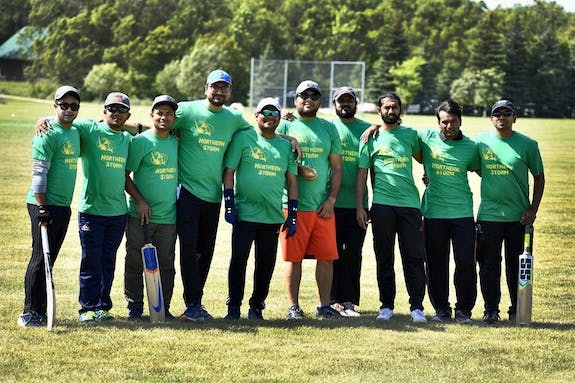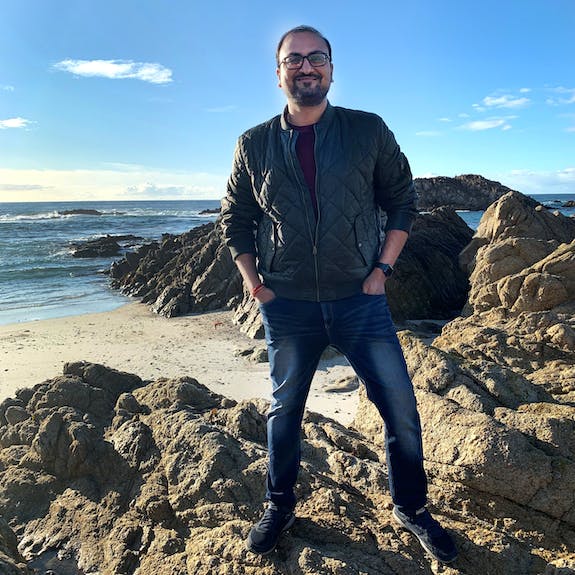
For nearly his entire life, Abhishek Banerjee has studied the tabla, a pair of small drums played in traditional Indian music.
“You sit down on the floor and you have a left drum and a right drum,” said Banerjee. “The left drum is the bass and the right drum is the treble. You balance them, and there’s a different fingering for each drum.”
(A famous example can be heard on Within You Without You by the Beatles.)
“My tabla practice sessions were quite rigorous from early childhood,” he said. “I would spend the first three to five hours of the day practicing my instrument, starting as soon as I woke up in the morning.”
Now a postdoctoral research associate for the Power and Energy Systems group at Idaho National Laboratory, Banerjee has his bachelor’s degree in tabla education and continues to teach and play at festivals.
“I love to arrange my sound setup whenever I am going to prepare on stage,” he said. “I really enjoy that part, more so while collaborating with other artists.”
Math was his backbone
Banerjee was born in Calcutta, India, to a singer and a police officer. Since an early age, he had an intense interest in science.
“I was good at mathematics and I was interested in the behavior of the universe,” he said. “Most of my time was spent asking: What is holding the planets together? Why does a wire conduct electricity? These kinds of questions came naturally to me. Math was always my backbone.”
If curiosity drove Banerjee’s interest in science, music was a family affair.
“It started with my mom introducing me to music,” said Banerjee. “And my dad was a tabla player, so I naturally chose that instrument.”
Lessons from a guru

At age 10, Banerjee began taking lessons from his first guru, Subrata Gupta.
Since those early years, Banerjee has branched out into singing and playing the cajon drum, the Jamaican drum, the harmonium and the acoustic guitar.
While Banerjee attended high school and college in India, he played competitive soccer and a little cricket. During the last year of his Ph.D. program at North Dakota State University, he played cricket for the university team and the Fargo Cricket Club.
Before North Dakota State, Banerjee completed his undergrad work in instrumentation and control engineering at West Bengal Institute of Technology.
When he started his Ph.D., he didn’t necessarily have an end goal in mind, “but I did have a starting point,” he said. “I wanted to design and implement advanced control techniques in power and control systems.”
Coordinating power & control systems
Banerjee’s adviser was renowned in the world of power systems and power electronics, which turned out to be a great match with Banerjee’s interest in power and control systems.
“Power systems cannot work alone,” he said. “Power systems are the hosts and control systems are embedded in them. I’m in interested in how to enhance the coordination and control strategies in renewable energy with modern, inverter-based power grids.”
After graduating from North Dakota State University, Banerjee received a number of job offers. He ultimately decided on INL because of the people and the opportunities.
“All the people I spoke to were very nice to me and very passionate about the research they were doing,” he said. “Also, I was very interested in working at a national lab. You get a lot of opportunity to work with the latest trends in engineering.”
Hydro, solar, country

Banerjee participates in projects for two U.S. Department of Energy technology offices.
For the Water Power Technologies Office, he uses INL’s Real Time Digital Simulators to model ways to integrate energy storage devices—batteries, capacitors and flywheels—with hydropower.
For the Solar Energy Technologies Office, Banerjee is part of a multilab effort to advance the cybersecurity of solar plants.
As for Banerjee’s musical pursuits, he hopes to continue learning various forms of music from different parts of the world. Ultimately, he hopes to help spread the art form throughout the U.S.
“In the U.S., I found it difficult in the beginning to showcase this beautiful instrument to the people,” he said. “Luckily, North Dakota State University gave me the first break when I played in an international celebration day. After that I received multiple opportunities to familiarize the Dakotans with this amazing instrument.”
In the meantime, Banerjee’s time in the Midwest helped expand his musical palate. “I listened to the local bands there,” he said. “Country music is something that I love.”
Hobbies are fulfilling, and fulfilled people make more productive employees. Hobbies unearth hidden skills, alleviate stress, unite you with others, and improve quality of life — all things that will help you function better at work. See other stories about Idaho National Lab employees.







